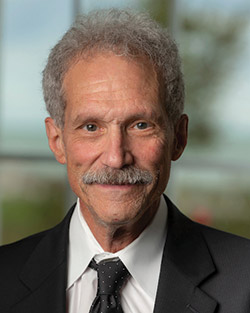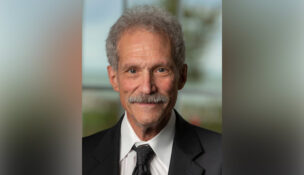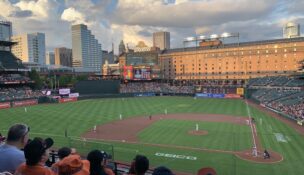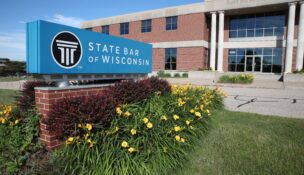There should be no ties in litigation
By: Bridgetower Media Newswires//November 11, 2021//

There is a saying in sports that a tie is like kissing your sister.
For an appeal to the Wisconsin Supreme Court, however, a tie would be like kissing your sister after having paid her a lot of money.
So far in 2021, the Wisconsin Supreme court has reached a tie, due to a justice recusal, in three cases, most recently in Jama v. Gonzalez, 2019AP629 (October 20, 2021). The “decision” (or lack thereof) came after briefing and oral arguments. Although the attorneys knew that Justice Karofsky had recused herself (without giving a reason), they each spent a substantial amount of time researching and writing briefs, practicing and attending oral arguments and, no doubt, suffering the angst of waiting for a decision, only to be told in one sentence (fourteen words), that there would not be one. Presumably the same occurred in the other two cases this year – and undoubtedly more in previous years.
Judge Don R. Willett of the United States Court of Appeals, Fifth Circuit, has written an excellent article on ties by the US and state Supreme Courts: “Supreme Stalemates: Chalices, Jack-O’-Lanterns and other State High Court Tiebreakers” 169 U. Pa. L. Rev. 441 (2020-2021). In it, Judge Willett said: “Game seven of the World Series would never end in a dismal tie. But America’s other national pastime—suing people—can end that way. It’s the legal equivalent of the infamous cut-to-black ending of The Sopranos, when irate HBO subscribers thought their cable had been whacked; no bang or whimper, just… nothingness…[S]talemate, while infrequent, subverts the fundamental—and institutional—purpose of a supreme court: to be supreme and to speak supremely…All that time, money, and energy—by the litigants and by the Court itself—with nothing to show for it.” At 450
Judge Willett’s research revealed that Wisconsin is in the minority of states with no tie-breaking procedure. In most states, ties resulting from there being an equal number of justices are avoided by either appointing a substitute justice as soon as the court finds itself short-handed or waiting until a tie actually occurs before naming a fill-in justice. He summarized that “Roughly three-fourths of anti-stalemate states appoint fill-in justices on the front end, aiming to avoid deadlock in the first place.”
In some of the tie-breaking states, the chief justice appoints a fill-in justice. In others, the governor picks a temporary, replacement jurist. A few states allow the court’s administrative personnel to handle the substitute-justice selection.
Wisconsin does none of the above. Rather, it allows lawyers to invest a substantial amount of time – thereby costing their clients a substantial amount of money – for absolutely nothing.
Inefficiency is inherent in any human activity. In medicine, it’s called “collateral bleeding” and every surgeon will say that it is the goal to minimize it since it can’t be prevented. Our legal system should make efforts to be as efficient as possible. One theme of this column has been that courts should exist to serve the system of justice and the general public (See “Court and Technology”, WLJ, April, 2021). They are not doing so when lawyers put in a substantial amount of work (and their clients pay for it) and the Supreme Court flicks it off in fourteen words.
Legal News
- Former law enforcement praise state’s response brief in Steven Avery case
- Eric Toney announces re-election bid for Fond du Lac County District Attorney
- Former Wisconsin Democratic Rep. Peter Barca announces new bid for Congress
- Republicans file lawsuit challenging Evers’s partial vetoes to literacy bill
- More human remains believed those of missing woman wash up on Milwaukee Co. beach
- Vice President Harris returning to Wisconsin for third visit this year
- Wisconsin joins Feds, dozens of states to hold airlines accountable for bad behavior
- Trump ahead of Biden in new Marquette poll
- Bankruptcy court approves Milwaukee Marriott Downtown ‘business as usual’ motion
- New Crime Gun Intelligence Center to launch in Chicago
- Arrest warrant proposed for Minocqua Brewing owner who filed Lawsuit against Town of Minocqua
- Wisconsin Supreme Court justices question how much power Legislature should have
WLJ People
- Power 30 Personal Injury Attorneys – Russell Nicolet
- Power 30 Personal Injury Attorneys – Benjamin Nicolet
- Power 30 Personal Injury Attorneys – Dustin T. Woehl
- Power 30 Personal Injury Attorneys – Katherine Metzger
- Power 30 Personal Injury Attorneys – Joseph Ryan
- Power 30 Personal Injury Attorneys – James M. Ryan
- Power 30 Personal Injury Attorneys – Dana Wachs
- Power 30 Personal Injury Attorneys – Mark L. Thomsen
- Power 30 Personal Injury Attorneys – Matthew Lein
- Power 30 Personal Injury Attorneys – Jeffrey A. Pitman
- Power 30 Personal Injury Attorneys – William Pemberton
- Power 30 Personal Injury Attorneys – Howard S. Sicula











